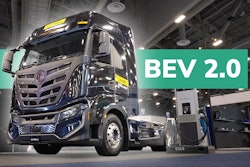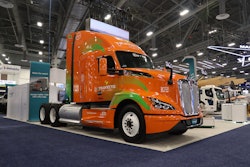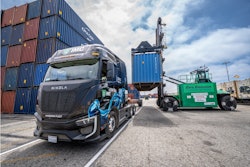Cross-border freight truck traffic is a significant factor that may not be on the radar for those planning zero-emission and alternative fuel freight infrastructure and regulations.
The mix of alternatives in freight truck technology’s messy-middle will be impacted by consistency between the U.S., Canada and Mexico. For example, a hydrogen fuel cell truck (FCEV) operating out of Edmonton going to Nebraska is going to need consistent fueling capability on its route. A battery electric vehicle (BEV) operating out of Vancouver, BC will need compatible electric-charging capability on its way to and from Boise. The U.S.-Mexico border, because of different driver regulations, will likely need significant alternative fueling infrastructure to accommodate the volume of trucks starting or ending their U.S. trips there.
The U.S., Canada and Mexico share something in common: freight crosses their borders daily – a lot of freight.
The U.S. Bureau of Transportation Statistics (BTS) estimates 5,526,056 trucks crossed from Canada to the U.S. in 2023. Coyote Logistics claims that most of that truck-trailer freight crossed that border and went on to its U.S. destination without a driver change and without transloading. The other drivable border with Mexico, according to BTS, saw 7,356,659 trucks cross. But rule differences for drivers crossing that border, per Coyote Logistics, mean that most of the trailer loads are transloaded near the border and are carried in by a different driver. BTS publishes the monthly graph of border crossings seen below.

Coyote Logistics estimates there are 88,000 companies involved in freight trucks crossing the U.S.-Canada border, and 178,000 trucking companies dealing with the U.S.-Mexico border. BTS publishes this map below of where those border crosses are occurring, with the size of the circle representing the volume of trucks.

Border crossings were some of the details that OEMs discussed with the Environmental Protection Agency and Department of Transportation during the planning for the 2010 Greenhouse Gas Regulations. There were many potential complexities for creating uniform rules for vehicles operating in the U.S. that might be registered in different countries, or partially completed in one country but then finished in another.
The need for consistency in planning infrastructure in North America to support the next generations of trucks with alternative fuels could become a stumbling block to powertrain technology adoption that impacts trade, jobs and profits.
Look at the map below of the first phase of the U.S. National Zero-Emission Corridor Strategy and compare it to the BTS Border Crossing map. It seems like the border crossing traffic is not being properly prioritized.

The volume of cross-border truck traffic is small compared to total freight traffic in the U.S., but it is a significant economic factor with respect to U.S. economics. Canada and Mexico are in the top three countries importing to the U.S. The two combined represent nearly a $1 trillion in annual imports to the U.S.
Details often matter. Will future trucking's transition away from fossil fuels be impacted by not properly factoring in cross-border freight trucks? Will this result in greater inefficiency and cost with more transloading events and more driver/truck/trailer hand-offs required?
Commercial freight is a North American business that includes the U.S./Canada and U.S./Mexico cross-border traffic. Ignoring that will only increase the risks of slowing the transition away from fossil-fueled trucks.












